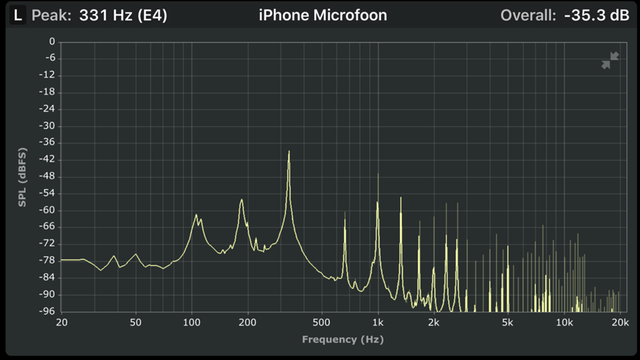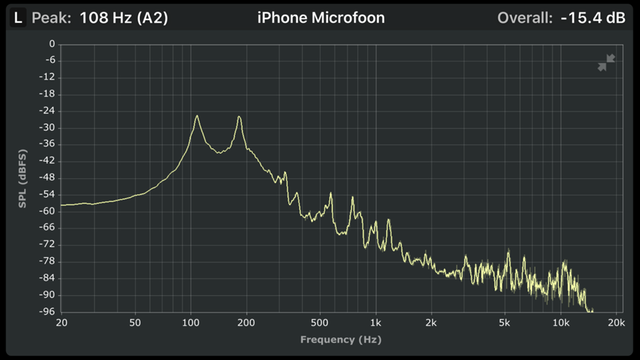
 |
|
#106
|
|||
|
|||
|
My guess is Andy has played many guitars with his design and believes he is onto something. Not too different from myself, years ago I found placing guitars in specific colors for an extended period of time gave pleasing results. My results only worked best in my opinion with Adirondack spruce guitars though, placing them in a light blue color. His idea might work better with specific wood types and combinations as mine did.
|
|
#107
|
|||
|
|||
|
Quote:
__________________
Guild CO-2 Guild JF30-12 Guild D55 Goodall Grand Concert Cutaway Walnut/Italian Spruce Santa Cruz Brazilian VJ Taylor 8 String Baritone Blueberry - Grand Concert Magnum Opus J450 Eastman AJ815 Parker PA-24 Babicz Jumbo Identity Walden G730 Silvercreek T170 Charvell 150 SC Takimine G406s |
|
#108
|
|||
|
|||
|
Quote:
|
|
#109
|
|||
|
|||
|
In retrospect, after posting a detailed explanation of my concerns regarding Andy's story in this very same thread: no.
 I assume you missed it. Feel free to comment or ask for clarification.
__________________
|
|
#110
|
|||
|
|||
|
Quote:
However, if you tap the bridge with your fingernails (or a pick for that matter), you get the sound of the string played with fingernails or a pick.
__________________
|
|
#111
|
|||
|
|||
|
I think I side with Andy’s pseudoscience over your pseudoscience. Barely... but... I don’t buy your “tests” here at all.
__________________
Taylors, Martins, Composite Acoustic, and an Alvarez. |
|
#112
|
|||
|
|||
|
Quote:

|
|
#113
|
|||
|
|||
|
Quote:
In this particular case I don't get why AP stated that if you fret the high E at the 12th fret (659 Hz), the fundamental will also resonate (329 Hz). It doesn't, and it never will. That's the whole point of fretting a string. I assume it was just a slip of the pen, or maybe he meant it the other way around: if you hit the open E string (329 Hz) the first harmonic (659 Hz) will sound along with it. This is indeed true. The recording of the body resonance after tapping the bridge may seem to be an odd thing to do, but it is a well-known method to capture the properties of acoustic systems (room ambiance, echo's, but also the tone of stringed instruments). The method is widely applied in digital audio processing, e.g., convolution reverb. It's a standard method and there are countless text books describing it. There is no point in recording the string pluck to test the body resonance. The string pluck will only generate a very limited number of frequencies. It's like taking a picture through a couple of narrow slits - you will only see a small part of the total scenery. A short tap, however, generates all audible frequencies in one go and feeds them to the top. The top will then resonate with those frequencies it supports. Since the tap contains all audible frequencies, you can be sure you never miss one. Regardless all of the above, my most important statement is that body resonant frequencies in a guitar are always so short and so unspecific that they will never interfere with the frequencies generated by the strings as they ring out. Since this is what the whole "better-in-tune-ness claim" of V-bracing is about, this claim makes no sense to me.
__________________
Last edited by Picker2; 03-09-2018 at 08:47 AM. |
|
#114
|
|||
|
|||
|
Quote:
It's not pseudoscience - it's not even science. These "tests" are very standard methods in digital audio engineering, applied every day by many. Any audio engineer and many others will confirm this.
__________________
Last edited by Picker2; 03-09-2018 at 08:43 AM. |
|
#115
|
|||
|
|||
|
People make me giggle......
Tee Hee
__________________
-Acoustics- '19 Taylor 322 '20 Taylor 214ce Plus '20 PRS P20 '19 Yamaha FS830 |
|
#116
|
|||
|
|||
|
I myself can confirm your tests are irrelevant to the questions at hand. I read all the “truths” on your website as well... many are just opinions that you label as truths. How about them crop circles, eh?
__________________
Taylors, Martins, Composite Acoustic, and an Alvarez. Last edited by mrgraveline; 03-09-2018 at 08:38 AM. |
|
#117
|
|||
|
|||
|
If you don't want to provide me with any substantiation of your statements, which I would be happy to discuss further, we can also simply agree to disagree. :-)
__________________
Last edited by Picker2; 03-09-2018 at 08:50 AM. |
|
#118
|
||||
|
||||
|
Quote:
Of course there is a point recording the string pluck to test and verify the body resonance produced by plucking the E string at the 12 fret (the statement you claim is not true) and there is no logical reason not to , in order to prove or disprove AP's specific statement. It does not matter how many body resonant frequencies the string pluck will produce, because those frequencies are the only salient frequencies involved in AP' statement. I may not have a degree in physics, but I have a Masters Certificate in Advanced Audio Production in Pro Tools and 15 years experience recording digital audio. So I am knowledgeable enough to know there is no logical reason not to use the same recording chain you used to record the bridge thump to record the string pluck . And your assertion that in this instance recording the tap will yield applicable results is flawed reasoning because it introduces unnecessary variables. Like the for example the bridge will not vibrate the same nor as long, as the string. The reality is that if you record the string pluck just like you recorded the tap, the resulting graph will show if there is any increased signal peaks below the E5 note . And might even prove you right . 
__________________
Enjoy the Journey.... Kev... KevWind at Soundcloud KevWind at YouYube https://www.youtube.com/playlist?lis...EZxkPKyieOTgRD System : Studio system Avid Carbon interface , PT Ultimate 2023.12 -Mid 2020 iMac 27" 3.8GHz 8-core i7 10th Gen ,, Ventura 13.2.1 Mobile MBP M1 Pro , PT Ultimate 2023.12 Sonoma 14.4 |
|
#119
|
|||
|
|||
|
Quote:
 , I went through the trouble to spend another three seconds, TWICE, to produce the measurements below. , I went through the trouble to spend another three seconds, TWICE, to produce the measurements below. This is the spectrum of the open E string of my Taylor GC BTO, plucked with my fingernail:  As you see, there is the narrow peak at 329 Hz (the fundamental), the first harmonic at 659, and many more higher harmonics. And... WAIT, there are 'subharmonics' too! One at 190 Hz and even one at 108 Hz! Wrong.  These are not subharmonics. This is the fundamental resonant frequency of the guitar's top (108 Hz) and another resonant frequency of the top at 190 Hz. I can verify this by tapping on the bridge, this time with my fingernail:  See? There they are again, at exactly the same positions. As I explained earlier in this thread, plucking the string generates a shock wave in the string, which propagates through the string to the bridge. The effect of this is essentially the same as tapping the bridge. This causes the 'subharmonics' in the upper graph, except these are not caused by the string, but by the body. So they are not subharmonics, they are body resonances. If you perform a real-time measurement of the plucked string, you will see that the body resonance peaks only last a short time. They appear, and are gone within half a second. The peaks caused by the string last as long as the string rings out - much, much longer. This is the reason I conclude that body resonances don't 'fight' or interfere with the vibrations of the string. Because, and I repeat: 1. They last very short 2. They don't produce a distinct tone, but a 'thud' sound. Stating that body resonances interfere with the 'in-tune-ness' of a guitar is like stating that the bass drum in a band interferes with the notes produced by the piano.
__________________
Last edited by Picker2; 03-11-2018 at 12:34 AM. |
|
#120
|
||||
|
||||
|
Quote:
And yes I see that the frequencies below the fundamental with a rise look to be in the same location as those with the bridge tap, which very interesting and speaks to your point . So I am guessing you are predicting the same would occur if you plucked the E string fretted at the 12 .. but we have only made it halfway to what I was suggesting . Where is the graph pluck with the E string fretted at the 12 th as per AP' statement ? Kinda interesting to note the string pluck open high string you did does appear to generate the "Full spectrum" as you called it, and even produces rises below what the tap on the bridge does (which looks like "additional information") HUMMMMMM ????? It appears you were perhaps mistaken as to that being a reason not to test it .  : :Also it's great that you bolded your statement but the inference in your statement does not appear to be what AP actually said.... To clarify .......What he said (according to what you quoted him as saying) was ------ Andy wrote: As an example, the E5 note on the high string at the 12th fret has a frequency value of about 659 Hz. An octave below is the open high E string at 329 Hz. If a guitar has a natural resonance hot spot around 320Hz, it will vibrate whenever either of these E naturals are played. But what we’ll hear is a mix of 329 or 659 and 320. That’s going to have a detrimental effect on what we get to listen to. I don't know or particularly care if what he is saying is true, but I am a bit of stickler for refuting what is actually said. BTW I have been meaning to mention your "White Lighting" piece is outstanding   
__________________
Enjoy the Journey.... Kev... KevWind at Soundcloud KevWind at YouYube https://www.youtube.com/playlist?lis...EZxkPKyieOTgRD System : Studio system Avid Carbon interface , PT Ultimate 2023.12 -Mid 2020 iMac 27" 3.8GHz 8-core i7 10th Gen ,, Ventura 13.2.1 Mobile MBP M1 Pro , PT Ultimate 2023.12 Sonoma 14.4 Last edited by KevWind; 03-09-2018 at 12:56 PM. |